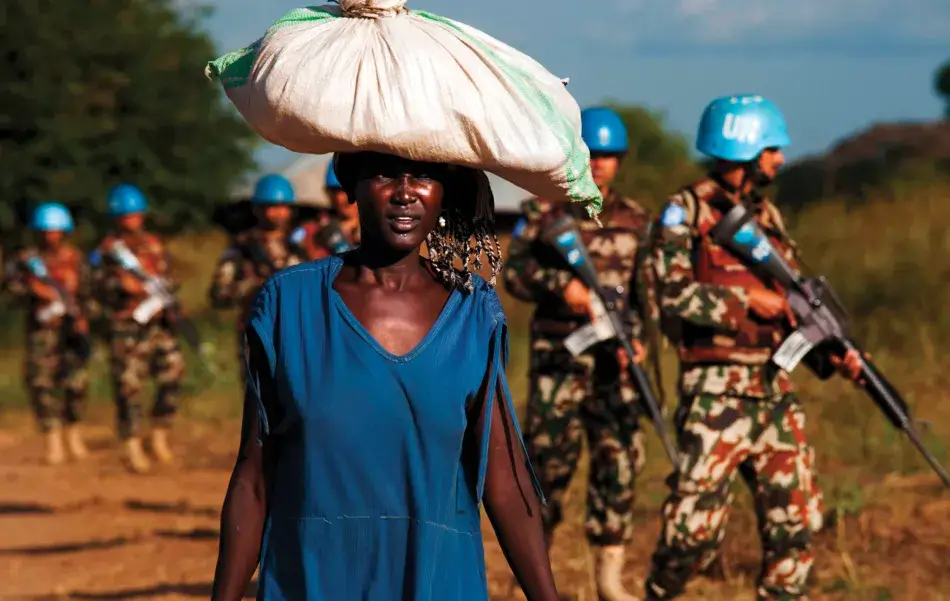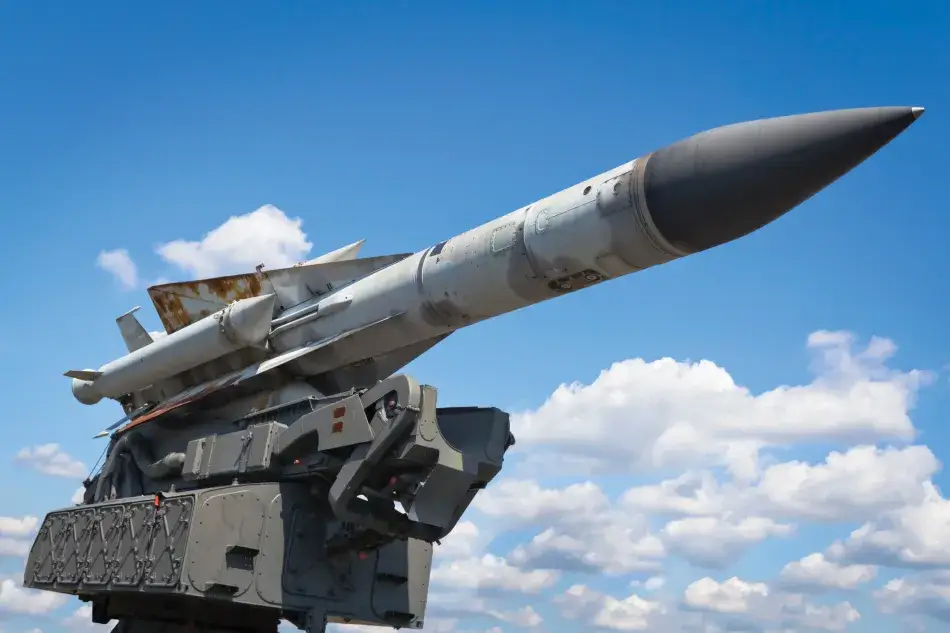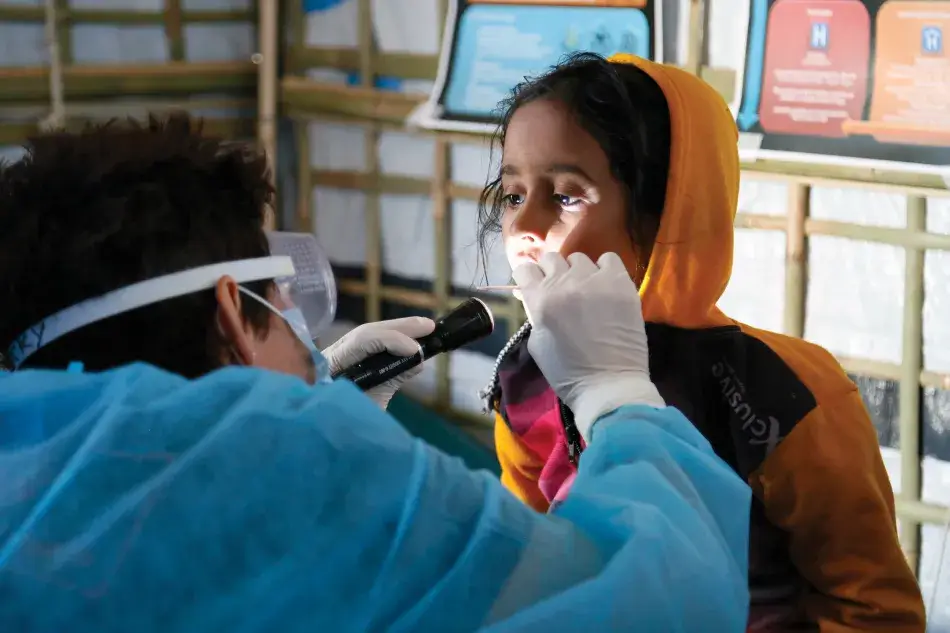
The Global Security and International Affairs program area draws on the expertise of policy-makers, practitioners, and scholars to foster knowledge and inform innovative and more substantial policies to address crucial issues affecting the global community. Projects underway in this area engage with pressing strategic, development, and moral questions that underpin relations among people, communities, and states worldwide. Each initiative embraces a broad conception of security as the interaction among human, national, and global security imperatives. Project recommendations move beyond the idea of security as the absence of war toward higher aspirations of collective peace, development, and justice.
Committee on International Security Studies
CHAIR
Scott D. Sagan
Stanford University
MEMBERS
Nicholas Burns
Harvard University
Antonia Chayes
Tufts University
Christopher Chyba
Princeton University
Karl Eikenberry
formerly, Stanford University; U.S. Army, ret.
Tanisha Fazal
University of Minnesota
Martha Finnemore
George Washington University
Nicholas Kristof
The New York Times
Susan Landau
Tufts University
Robert Legvold
Columbia University
Rose McDermott
Brown University
Steven E. Miller
Harvard University
Barry Posen
Massachusetts Institute of Technology
Adam Roberts
University of Oxford
Jennifer M. Welsh
McGill University
Paul H. Wise
Stanford University
Project
Civil Wars, Violence & International Responses

The Civil Wars, Violence, and International Responses project stems from the observation that current multilateral approaches for preventing, mitigating, and resolving civil wars and intrastate violence are often far too ambitious. They frequently overpromise stability, security, peace, democracy, and development to countries experiencing high levels of violence and instability. The project identified six threats that emerge from civil wars and intrastate violence: pandemic diseases, transnational terrorism, migration, regional instability, great power conflict, and criminality.
The project has engaged in extensive domestic and international outreach to share findings and recommendations that deliver a more comprehensive, effective, and integrated approach to conflict prevention and crisis management, which encompasses security, diplomacy, and development strategies in countries such as Colombia, Nigeria, Ethiopia, Syria, Lebanon, and Sri Lanka, among others. Building on these policy discussions, the project published a research paper that focuses on the policy implications of the project’s findings, which will be distributed to relevant policy-makers in the United States and internationally.
Project Chairs
Karl Eikenberry
formerly, Stanford University; U.S. Army, ret.
Stephen D. Krasner
Stanford University
Project Publications
“Civil Wars & Global Disorder: Threats & Opportunities,” Dædalus, edited by Karl Eikenberry & Stephen D. Krasner (2017)
“Ending Civil Wars: Constraints & Possibilities,” Dædalus, edited by Karl Eikenberry & Stephen D. Krasner (2018)
“Good Enough” Governance: Humility and the Limits of Foreign Intervention in Response to Civil Wars and Intrastate Violence, Karl Eikenberry & Stephen D. Krasner (2020)
Funders
Humanity United
Smith Richardson Foundation
Oak Foundation
Project
Meeting the Challenges of the New Nuclear Age, Phase One

The world has entered a new nuclear era. No longer dominated by two nuclear superpowers, the evolving multipolar nuclear order presents fundamental challenges to the conceptual and practical means of avoiding nuclear war. Moreover, the new era has slowly dismantled the bilateral arms control framework, with no clear prospect that it will be revived and extended. The possibility that a framework or frameworks encompassing other, let alone all, nuclear powers can be achieved seems even more remote. In addition, advances in weapons technology and the opening of new frontiers, such as cyber capabilities and artificial intelligence, make a shifting environment still more complex. The pathways to inadvertent nuclear war have multiplied across more regions and relationships.
Since 2017, the Meeting the Challenges of the New Nuclear Age project has worked to identify the major dangers generated by the dynamics of a multipolar nuclear world that pose the greatest threat of inadvertent nuclear war; offer alternative approaches to addressing each of these dangers; facilitate discussions with relevant communities in the United States and abroad; and encourage and assist policy-makers, Congress, the analytical community, and the media to think systematically about our increasingly multipolar world. The publications produced by the project have been shared widely with domestic and international policy-makers, scholars and students of nuclear affairs, and leaders of international organizations.
Meeting the Challenges of the New Nuclear Age is rooted in the critically important work on arms control that the Academy conducted from 1958 to 1960 to prevent a nuclear confrontation between the United States and the Soviet Union. During that time, Academy Fellows gathered monthly to build a cooperative framework between the United States and the Soviet Union based on the limitations of the nuclear stockpile and the establishment of mutual vulnerability between the two rivals. The group included Donald Brennan, Edward Teller, Henry Kissinger, and Thomas Schelling, among others. Today, more than ever, an effort that brings together scholars and policy-makers to examine the wide range of challenges posed by the changing nuclear order is urgently needed.
Project Chairs
Robert Legvold
Columbia University
Christopher Chyba
Princeton University
Project Publications
Meeting the Challenges of the New Nuclear Age: U.S. and Russian Nuclear Concepts, Past and Present, Linton Brooks, Alexei Arbatov & Francis J. Gavin (2018)
Meeting the Challenges of the New Nuclear Age: Emerging Risks and Declining Norms in the Age of Technological Innovation and Changing Nuclear Doctrines, Nina Tannenwald & James M. Acton, with an Introduction by Jane Vaynman (2018)
Meeting the Challenges of the New Nuclear Age: Nuclear Weapons in a Changing Global Order, Steven E. Miller, Robert Legvold & Lawrence Freedman (2019)
Contemplating Strategic Stability in a New Multipolar Nuclear World, Robert Legvold (2019)
“Meeting the Challenges of a New Nuclear Age,” Dædalus, edited by Robert Legvold & Christopher Chyba (2020)
Funders
Louise Henry Bryson and John E. Bryson
John F. Cogan, Jr. †
Lester Crown
Alan M. Dachs
Bob and Kristine Higgins
Richard Rosenberg
Kenneth L. and Susan S. Wallach
† Deceased
A World Without Nuclear Constraints: A Virtual Discussion Series
The last remaining bilateral nuclear arms treaty between the United States and the Russian Federation is set to expire on February 5, 2021. The New Strategic Arms Reduction Treaty (“New START”), negotiated in 2010, set forth strict, verifiable limits on the number of strategic missile launchers both nations can maintain. If the treaty expires, the world’s largest nuclear arsenals would not be subject to regulation or inspection for the first time since the middle of the Cold War.
With the number of nuclear weapons states increased to nine and the rapid advances in weapons technology further complicating the environment, it is a challenging time for nuclear arms control and, by implication, for global peace and security. The end of New START is part of a changing landscape: many other treaties governing nuclear weapons and related technologies have been abandoned or abrogated in the last twenty years.
As Robert Legvold and Christopher Chyba write in their introduction to the Spring 2020 issue of Dædalus on Meeting the Challenges of a New Nuclear Age, the “new era has slowly dismantled this bilateral arms control framework, with no clear prospect that it will be revived and extended.” To stimulate discussion about the changing multipolar nuclear order, in the summer of 2020, in collaboration with the Hoover Institution, the Academy convened a series of virtual discussions with experts and former officials from the United States, Russia, and China to identify and explore areas that could lead to greater international cooperation.
An essential question connected all the discussions: will we have a future with nuclear arms control or a future without it?
“The Academy’s virtual meetings were a vivid reminder of the historic U.S.-Soviet negotiations with Mikhail Gorbachev during the time I was in office. That memory prompted me to say that I had seen the Promised Land – a world without nuclear weapons – at Reykjavik, so I know that it exists, but I also know how hard it will be to get there.”
— George P. Shultz
The participants acknowledged the challenges of protecting American security interests in an unregulated nuclear world, recalling that the dawn of the “first” nuclear age – which lasted from the development and use of nuclear weapons in 1945 until the negotiation of the first arms control agreements beginning in 1970 – produced massive accumulations of nuclear arms, as well as countless crises, near-misses, and widespread global dangers. Polling research introduced by one participant showed that U.S. public support of nuclear deterrence combined with arms control and legal restraints remains strong along bipartisan lines, which prompted the question of how to elicit concern from U.S. policy-makers to address the declining support in Congress for nuclear arms control.
Since the United States and Russia today control the majority of nuclear arms – over 6,000 weapons each, constituting over 90 percent of the global holdings – the participants focused not only on the current status of talks between the two countries, and the impediments to renewing New START, but also on understanding and forecasting what future negotiations might look like.
The final session in the series featured presentations by Russian and Chinese experts on the official priorities of their countries and the debates taking place in Moscow and Beijing. From one point of view, the discussions were encouraging because the United States, Russia, and China have the power to reduce significantly the role that nuclear weapons play in international affairs. Skillful diplomacy between the United States and Russia could extend the life of the New START agreement by five years, which would provide time to discuss and negotiate a successor agreement and allow for further reductions in the world’s two biggest nuclear arsenals and other measures to reduce nuclear dangers. Over time, talks on how to manage the new technologies could be extended to other nations with nuclear weapons, beginning with China.
An important outcome of the discussion series was the identification of a number of issues that might form the basis for official talks and provide avenues of future research and collaboration for the Academy’s nuclear program.
Project
Meeting the Challenges of the New Nuclear Age, Phase Two: Deterrence & New Nuclear States

With the emergence of three new nuclear powers (India, Pakistan, and North Korea) and several more potentially becoming nuclear states (including Iran, Saudi Arabia, and Turkey), the world is on the verge of a new nuclear age. This will demand new thinking about the security implications of nuclear powers that may be in highly hostile environments, suffer from domestic instability, have fewer resources, or be led by personalist dictators. Phase Two of Meeting the Challenges of the New Nuclear Age investigates the deterrence and defense implications facing small nuclear force countries and potential proliferators.
The project is producing an edited volume of innovative, policy-relevant essays that will be published by a university press. Outreach activities will be aimed at nuclear policy-makers (primarily in the United States) and academic centers and think tank institutes with a specific focus on nuclear studies.
Project Chairs
Scott D. Sagan
Stanford University
Vipin Narang
Massachusetts Institute of Technology
Funders
Louise Henry Bryson and John E. Bryson
John F. Cogan, Jr. †
Lester Crown
Alan M. Dachs
Bob and Kristine Higgins
Richard Rosenberg
Kenneth L. and Susan S. Wallach
† Deceased
Project
Rethinking the Humanitarian Health Response to Violent Conflict

Rethinking the Humanitarian Health Response to Violent Conflict seeks to understand and address current trends in humanitarian contexts that pose new or evolving challenges for humanitarian health responders. Among the most pressing challenges are the increasingly protracted nature of civil and non-international armed conflict; the fact that many of the world’s most violent places are facing criminal or political violence rather than conflict as conventionally understood; shortfalls in funding; and changing geopolitical relations. This project brings together political scientists, legal and security experts, health professionals, and humanitarians to examine current challenges to effective humanitarian action and to develop, where necessary, new strategies for preventing civilian harm and delivering critical health services in areas plagued by violent conflict.
The project’s initial work will focus on two key priority areas. First, building on its efforts to address the political and security dimensions of pandemic response in areas of weak governance and violent conflict, the initiative will convene a series of rapid-cycle workshops on global cooperation and pandemic control. Drawing upon the Academy’s strengths in political science, diplomacy, global health, and the arts, the project will explore how political legitimacy, trust in expert authority and information, divisive political environments, and cultural mechanisms of community protection and social cohesion shape the ability of states and international institutions to respond to infectious outbreaks.
Second, to respond to the acute challenges that humanitarian organizations face in addressing health needs in areas with extreme levels of political or criminal violence–settings that now account for more violent deaths than war zones–and in places where people are fleeing from such violence, the project will convene interdisciplinary groups of experts from across multiple regions to explore the questions state sovereignty poses for humanitarians operating in such settings and to analyze and examine how the dynamics of political and criminal violence influence humanitarian responses.
Project Chairs
Jaime Sepulveda
University of California, San Francisco
Jennifer M. Welsh
McGill University
Paul H. Wise
Stanford University
Funders
Louise Henry Bryson and John E. Bryson
Project
Promoting Dialogue on Arms Control & Disarmament

Unlike the Cold War, the current nuclear age is characterized by a simultaneous collapse of arms control agreements and the absence of any strategic dialogue among the three main nuclear players, which would serve to minimize and reduce the potential risks of a nuclear escalation.
One strand of the project’s work consists of a series of bilateral U.S.-Russia and U.S.-China dialogues designed to identify critical short-term goals in arms control. The meetings will identify areas for cooperation and conceptual thinking about measures that might strengthen strategic stability and help to reduce the significant dangers of nuclear weapons being used in the future. Through reports and outreach activities, the project aims to contribute to rebuilding trust and predictability among the rival Great Powers.
A second strand of work will build on the Academy’s experience organizing educational sessions for the United States Congress on a range of topics, including cybersecurity, disaster response, and federal research policy in addition to nuclear issues. Through a series of engagements with members of Congress and their staff, the project will help to foster and strengthen knowledge on key issues and challenges facing the United States in arms control and international security, including renewal of the New START treaty and the dangers of a world without nuclear constraints.
Project Chair
Steven E. Miller
Harvard University
Project Publication
Nuclear Perils in a New Era: Bringing Perspective to the Nuclear Choices Facing Russia and the United States, Steven E. Miller & Alexey Arbatov (2020)
Funder
The Raymond Frankel Foundation